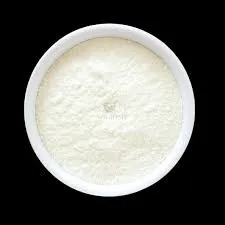
កក្កដា . 26, 2024 16:30 Back to list
Understanding the Composition and Ingredients Used in HPMC Manufacturing Process
What is HPMC Made From?
Hydroxypropyl Methylcellulose (HPMC) is a versatile and widely used polymer in various industries, most notably in pharmaceuticals, construction, food production, and cosmetics. Understanding what HPMC is made from provides insights into its unique properties and applications.
HPMC is derived from cellulose, a natural polymer that is the main component of the cell walls in plants. Cellulose itself is a complex carbohydrate made up of long chains of glucose molecules. To produce HPMC, cellulose undergoes several chemical processes, transforming it into a derivative that has hydroxypropyl and methyl functional groups. This modification is crucial for enhancing the solubility and functionality of the polymer.
What is HPMC Made From?
The key step in the production of HPMC is etherification, a chemical reaction where the cellulose reacts with propylene oxide and methyl chloride. In this reaction, the hydroxyl groups on the cellulose structure are replaced by hydroxypropyl and methyl groups, resulting in the formation of HPMC. The ratio of these substituents can vary, influencing the properties of the final product, such as its solubility, viscosity, and film-forming capabilities.
what is hpmc made from

HPMC exhibits several advantageous properties that are primarily credited to its chemical structure and the presence of hydroxypropyl and methyl groups. For instance, these modifications enhance the hydrophilicity of HPMC, allowing it to dissolve in cold water to form a clear solution. This property makes HPMC a valuable ingredient in various applications. In the pharmaceutical industry, it is often used as a binder and film-forming agent in tablets and capsules, contributing to their stability and release profiles.
In the construction industry, HPMC is appreciated for its water retention and viscosity-modifying properties. It is commonly added to cement and mortar formulations, improving workability and adhesion while preventing the mix from drying too quickly. This results in stronger, more durable construction materials.
In food production, HPMC is used as a food additive, where it acts as a thickener, emulsifier, or stabilizer, enhancing the texture and consistency of various products. It is recognized as safe for consumption, making it a popular choice in many processed foods.
The cosmetic industry also leverages the unique properties of HPMC. It is utilized in skin care products and cosmetics as a thickener, stabilizer, and film-forming agent, providing desirable application qualities such as smoothness and spreadability.
In summary, HPMC is derived from cellulose through a series of chemical processes involving etherification with propylene oxide and methyl chloride. This modification endows HPMC with numerous beneficial properties, making it a vital ingredient across diverse industries. Its ability to dissolve in water, form films, and stabilize formulations underpins its widespread use, from pharmaceutical applications to food and cosmetics. As industries continue to evolve, the demand for HPMC is likely to grow, underscoring its importance as a multifunctional polymer.
-
Versatile Hpmc Uses in Different Industries
NewsJun.19,2025
-
Redispersible Powder's Role in Enhancing Durability of Construction Products
NewsJun.19,2025
-
Hydroxyethyl Cellulose Applications Driving Green Industrial Processes
NewsJun.19,2025
-
Exploring Different Redispersible Polymer Powder
NewsJun.19,2025
-
Choosing the Right Mortar Bonding Agent
NewsJun.19,2025
-
Applications and Significance of China Hpmc in Modern Industries
NewsJun.19,2025







